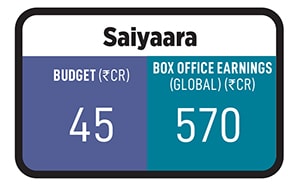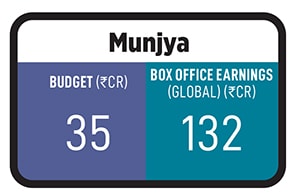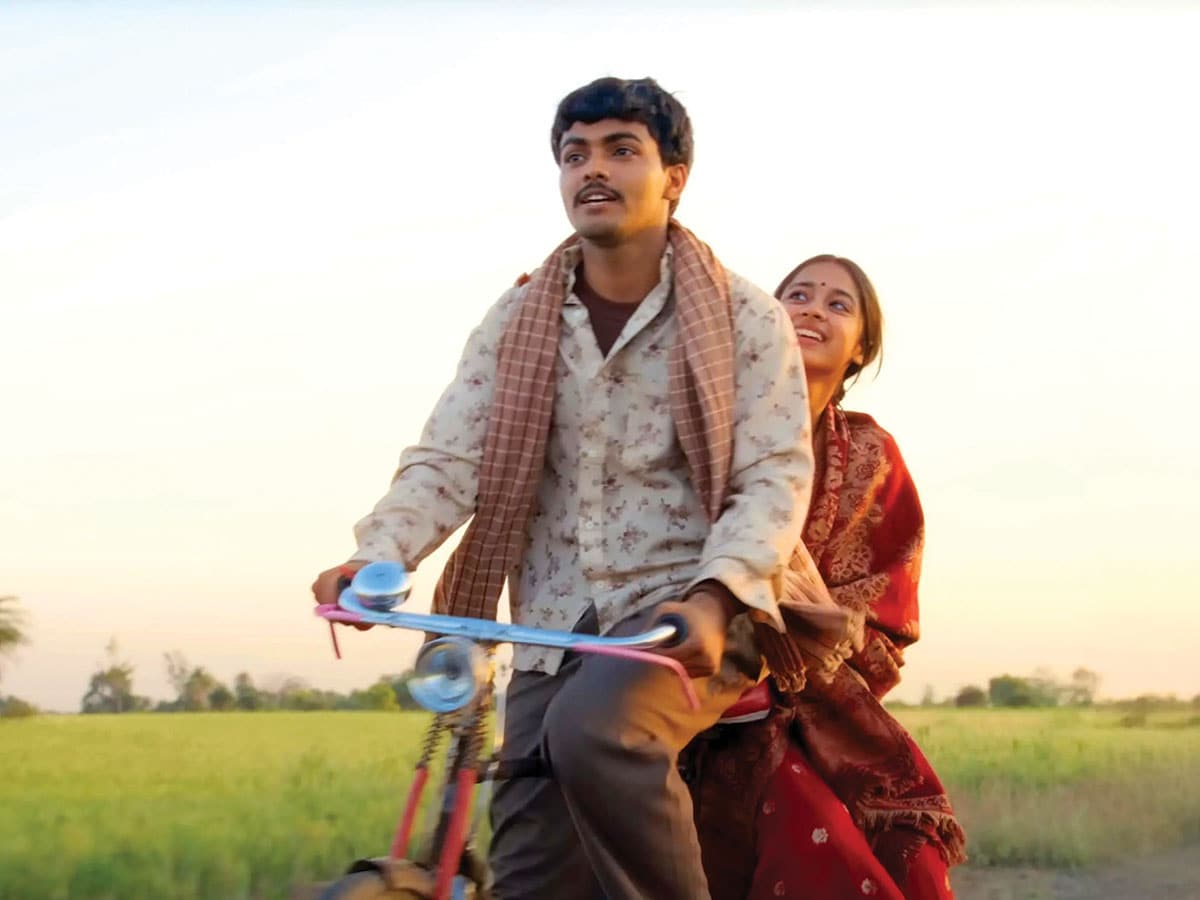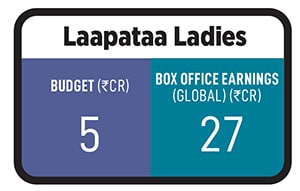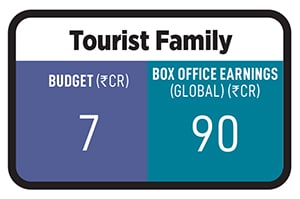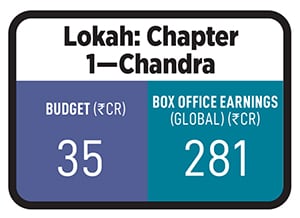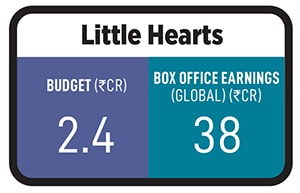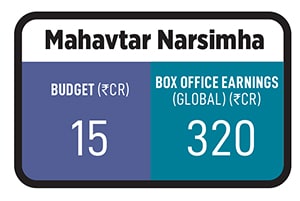How small-budget films are winning big at the box office
Low- and mid-budget films—with rooted stories, age-appropriate casting and traditional marketing—are raking in the moolah. Why is the audience rejecting superstar-led projects?
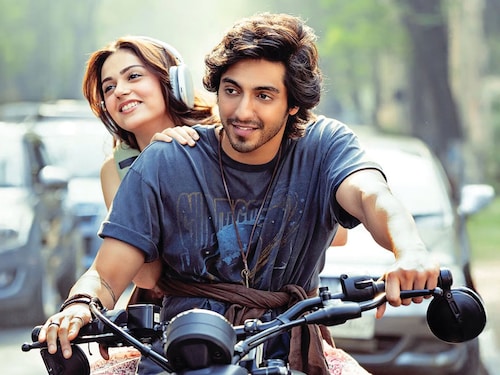

Two months before its release, Yash Raj Films (YRF) honcho Aditya Chopra watched a rough cut of Saiyaara and predicted it would cross ₹100 crore. He was confident of that even if the opening was in low single digits. “To be honest, I thought he was being overly optimistic in this environment,” Mohit Suri, the director of Saiyaara, tells Forbes India, alluding to the lull at the box office in the last five years. But Chopra’s prediction about the romantic musical drama came true.
A YRF production starring newcomers Ahaan Panday and Aneet Padda, Saiyaara created havoc at the box office since its theatrical release on July 18. Made on a budget of a little over ₹45 crore, the film earned ₹570 crore worldwide with net India collections of ₹329 crore. The first weekend brought in ₹89 crore net, including ₹28.75 crore on the opening day.
Saiyaara is one among many small- and mid-budget films in the recent times that have consistently outperformed several star-driven blockbusters. In the last couple of years, Bollywood and South Indian movies such as Munjya, Laapataa Ladies, Hanu-Man, Madgaon Express, Manjummel Boys, Srikanth, Tourist Family, Lokah: Chapter 1—Chandra, Little Hearts, Mahavtar Narsimha and Su From So have fared better than some of the big-budget films riding on superstars.
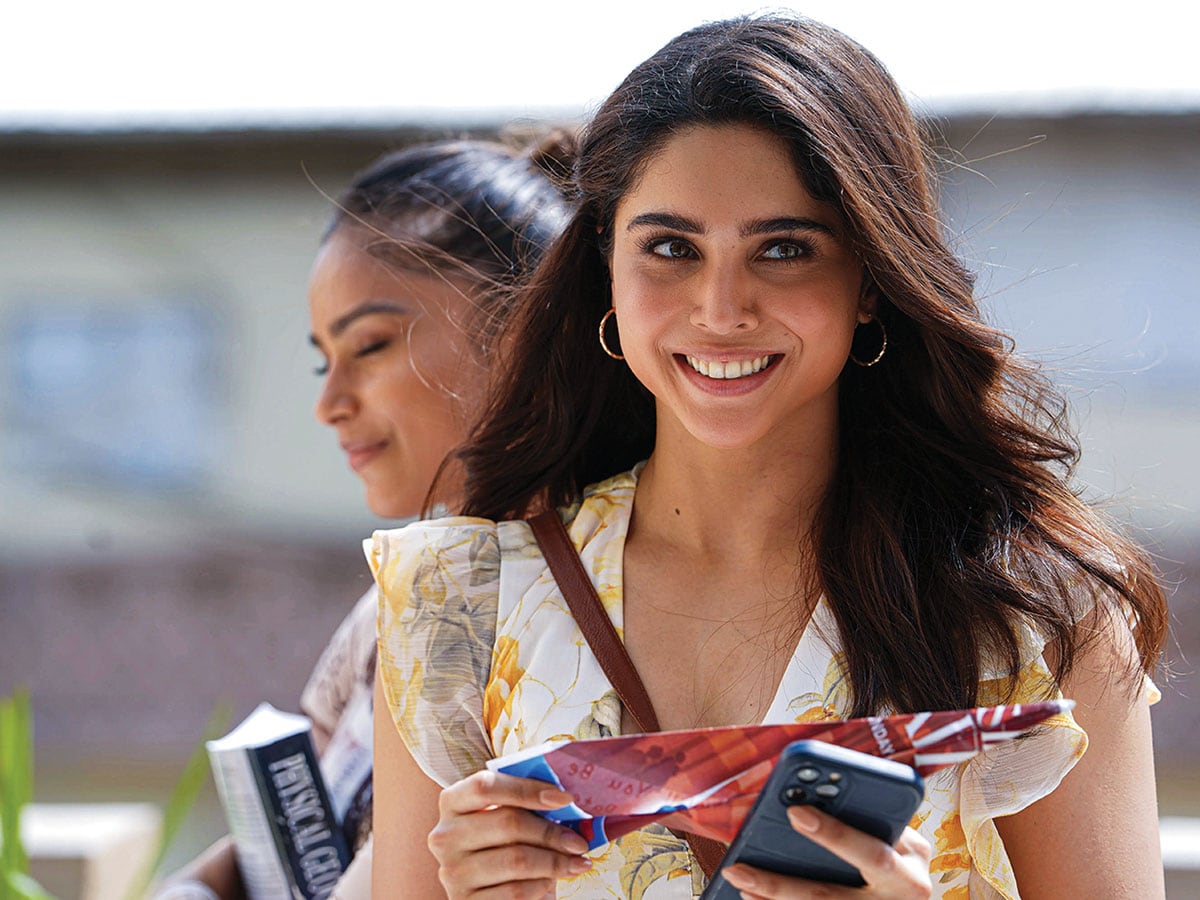
For instance, Munjya—a horror comedy about a Maharashtrian folklore headlined by 27-year-old actor Abhay Verma—made with a budget of ₹35 crore grossed ₹132 crore globally, including ₹35 crore in the opening week.
Aditya Sarpotdar, the director of Munjya, believes making a film with such budgets is both a risk and a challenge. “It’s always the underdog and you never know whether the film will do the numbers at the box office. A lot of credit goes to the producers for believing in these movies and releasing them in theatres instead of going directly to streaming platforms. The promotion and marketing budget to take these films to the audience is huge,” he says. What often makes these films work, he adds, is the audience’s appreciation for a film that wasn’t on their radar but pleasantly surprised them upon release.

Suri says that for Saiyaara, the audience response mattered to him more than the collections. At a time when filmmakers are busy making sequels, part twos of the original releases or action films with big stars, he was clear that he wanted to make a movie that people will truly love.
“With Saiyaara, I went back to the basics. The producer had stretched the budget way more than a newcomer film would have enjoyed, but he never made me feel that way. There was no emotional compromise on the film,” says Suri. Chopra even insisted on shooting in Manali instead of using visual effects for just one key scene, choosing authenticity over cost-cutting, even though the last shot was the only scene that needed to be filmed there.
Sneha Desai, who wrote the screenplay and dialogues for Laapataa Ladies, attributes the success of the 2024 film to its honesty, the connection it has with the grassroots, and the empathy and identification that people of India felt with the characters. “Despite box office diktats, I continue to believe that a film is primarily made on paper,” she says. “The greatest currency of a film is its script. Once you have a strong script, one can only go on to build a stronger edifice on it.”
That perhaps explains why the Tamil film Tourist Family, made with only ₹7 crore, has earned ₹90 crore worldwide. The directorial debut of Abishan Jeevinth narrates the story of a Sri Lankan family that comes to India in search of a better future following an economic crisis in their home country. In terms of its 1,200 percent profit, it has outdone the Vicky Kaushal-starrer Chhaava—Bollywood’s most successful film of 2025 with global collections of ₹808 crore against a budget of ₹90 crore (around 800 percent profit). Similarly, Mahavtar Narsimha, an animated mythological film, earned ₹320 crore against a ₹15 crore budget.
In contrast, highly anticipated big-budget movies such as Sikandar starring Salman Khan, Akshay Kumar’s Housefull 5, Son of Sardaar 2 with Ajay Devgn in the lead and Hrithik Roshan’s War 2 failed to impress the box office and the audiences this year. Made on a budget of ₹150 crore to ₹400 crore, most either failed to break even or earned just a little more than the cost of making.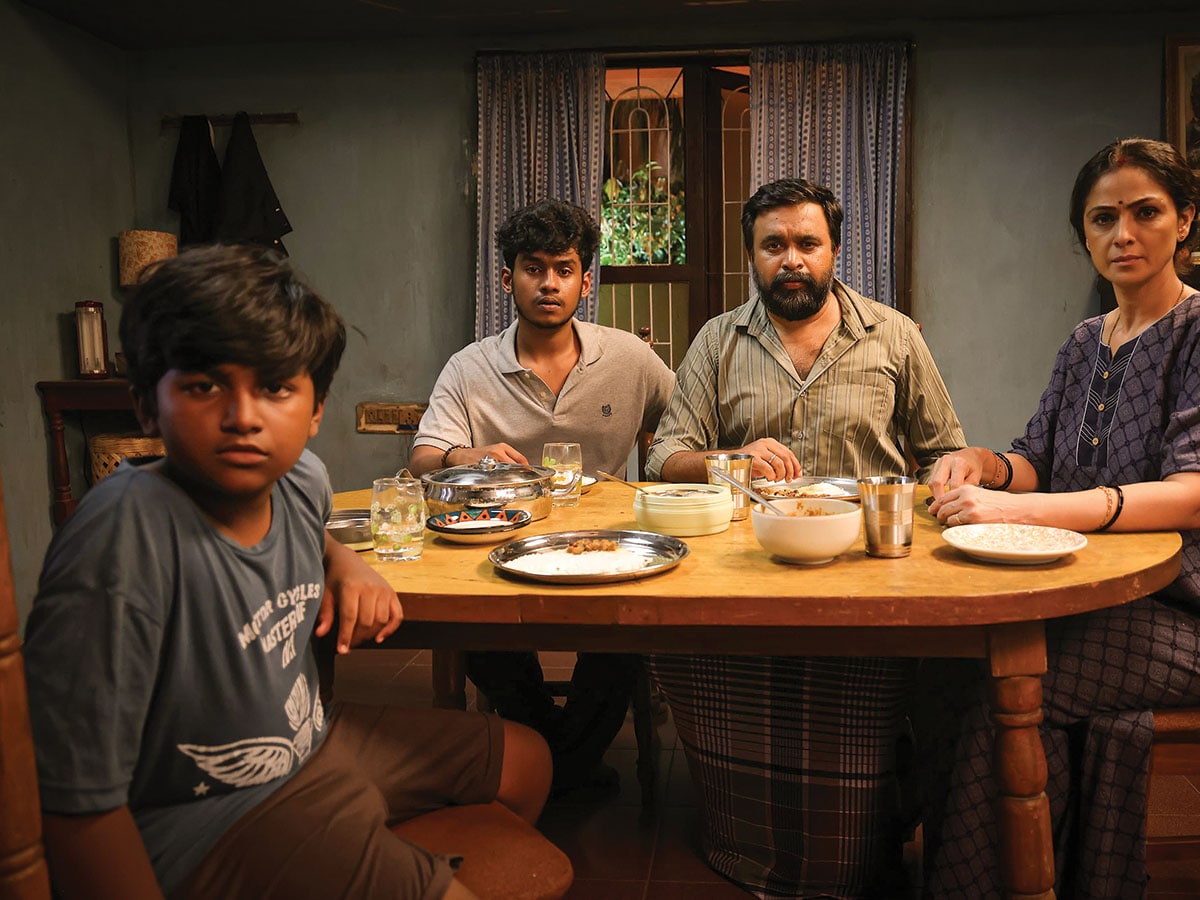
Sanket Kulkarni, head-business development (theatrical), Ormax Media, says the biggest differentiator between a low- or mid-budget and a high-budget film, most of the time, is the presence of a star. “In recent times, stardom has become a less reliable driver of first-day box office performance,” he says. Devgn’s films have opened between ₹1.7 crore and ₹19 crore in the last year or so, while Kumar’s recent releases have ranged anywhere from ₹2.5 crore to ₹22 crore. “Thus, having a star in the film is no longer a guaranteed driver of a strong first-day collection in today’s environment of shifting audience habits. This has, to an extent, levelled the playing field for films without major stars,” he explains. “For example, Munjya and Chandu Champion, released just a week apart, opened at similar levels despite the clear difference in star power. Moreover, the growing influence of franchises, along with footfall-boosting levers such as Cinema Day pricing, have enhanced the box office prospects of films with limited star value. Saiyaara, Stree 2 are great instances of the same.”
Big budgets help put up a visual extravaganza or scale up things on screen, but that need not translate into earnings. According to Sarpotdar, spectacle alone does not guarantee success. “If the audience feels they’ve been taken for a ride or extremely undermined in terms of their intellect, they reject the film. Audiences have gotten smarter because they have been consuming a lot of international and regional content on streaming platforms. An important reason why people are rejecting these films is because there is nothing new that they get to see in them. It’s the same repackaging of old cinema that had worked at some point,” he says.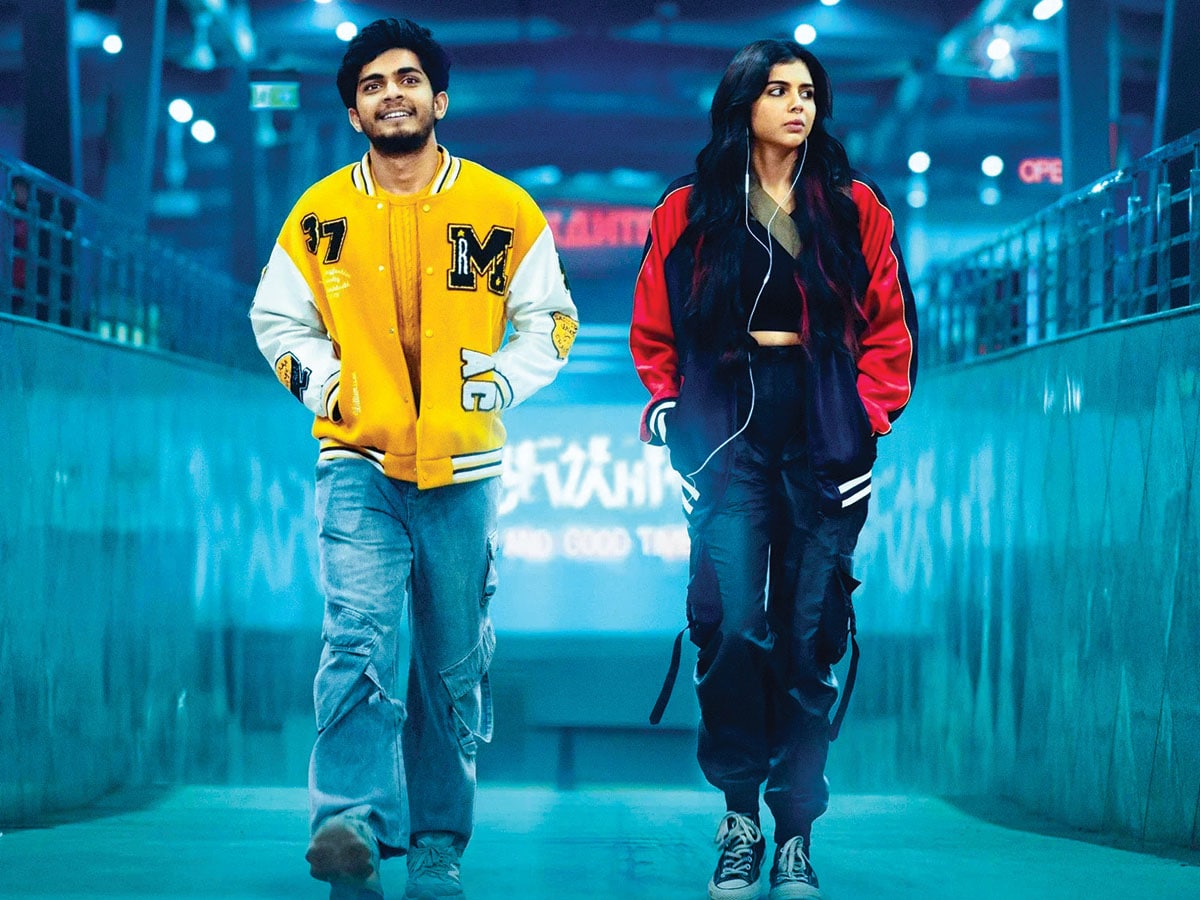
Desai emphasises that projects must be mounted according to the content on paper. “The reasons for the failure of big-budget films are weak scripts, stories that are compelled to shape-shift to merge with the flavour of the season, the lack of conviction and trying to make something larger than life without having roots,” she says.
Suri humbly states that he can barely figure out what works for him. So, he wouldn’t know what makes a film a hit or a flop. However, he feels that marketing and positioning often overshadow fundamentals like story, casting and music. “Big should be the thought, not the budget,” he says, adding: “We [the industry] have started casting as a business decision rather than casting appropriate.”
For Saiyaara, the filmmaker reveals that he had suggested some established names for the lead roles as he was desperate to ensure that the film gets made. Chopra played the devil’s advocate. “My marketing and distribution teams will be happy, but your film will fail,” he argued. “The story is about youngsters falling in love. It is about someone who has not seen stardom, so how can you cast a star in it?” Suri was convinced. In the end, newcomers were chosen, matching the film’s theme of young love.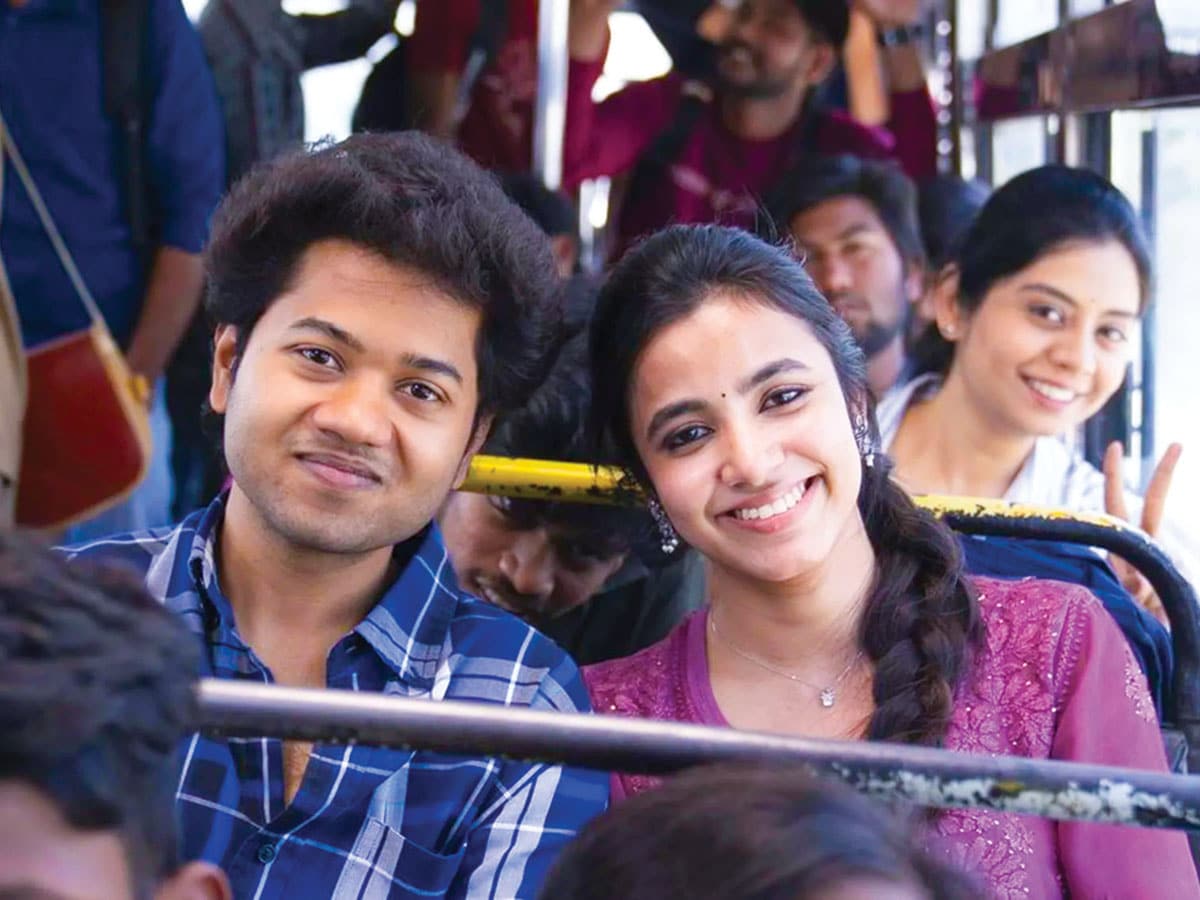
In the case of Munjya too, the story demanded someone in his early 20s to play the lead role. “We went with the demand believing that people will also understand,” says Sarpotdar. “Now when you see Saiyaara and its numbers, I think people value a film for trying to stay in the world and committing to the world it is presenting.”
Desai agrees. “Laapataa Ladies could have had the most expensive actors, but the baggage, the stardom would have taken away from the innocence that the script had,” she says, adding that Aamir Khan Productions that produced the film has deep pockets, but it decided to stay true to the script. “There was no point in having crazy computer graphics for a film like Laapataa Ladies or a production design which looked snazzy. The money that you spend has to be subject-friendly… it has to cater and deliver to the content you have in mind.”
According to Kulkarni, everything boils down to content as “dependence on stardom, a strong pillar for the success of a film, has diminished by a certain margin”.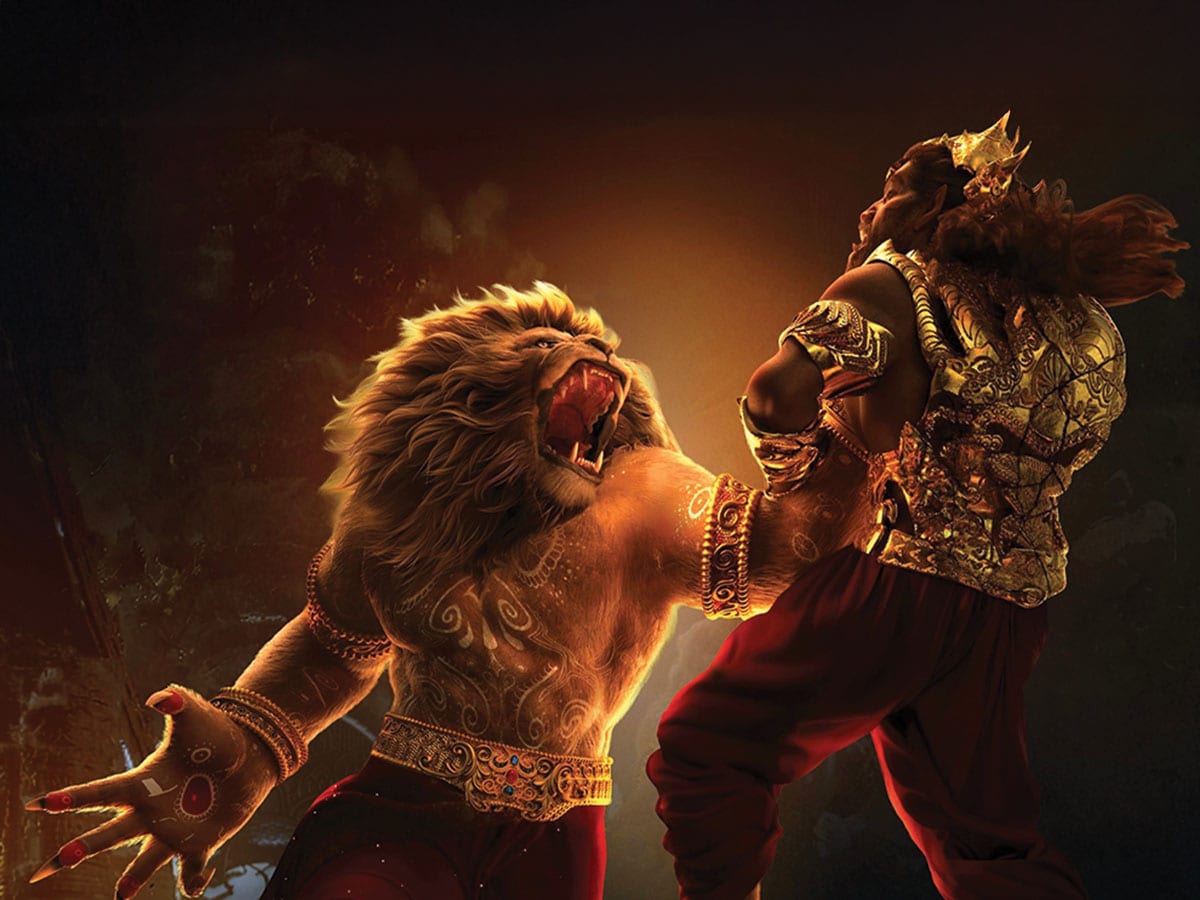
Marketing and promotions also play a vital role in creating a buzz about small- and medium-budget films, especially if a star is not attached with them. “The trailer is your most important asset. It is a make-or-break for a film,” says Sarpotdar.
In the case of Munjya, the titular character—a supernatural entity—was created using computer-generated imagery. Sarpotdar describes him as the ‘hero’ of the film and says the first teaser was purely about him. “There was a lot of curiosity about Munjya,” he says. The team also realised that the film did not have a song. Therefore, to make it appear entertaining to the audiences, they added Taras, starring Sharvari, as a track.
Suri, too, went traditional with the marketing of Saiyaara and focussed on the trailer and music. He laments that marketing has now become a new-age product with gimmicks instead of trying to sell the film. “Films like Conjuring that have had no or limited marketing have also opened to huge numbers. While you need a certain amount of marketing, there is a disassociation between the two,” he explains. He believes that while some marketing is essential, films succeed on merit.

Kulkarni explains that no matter how good a film is, its lifetime box office performance depends strongly on the first day and opening weekend collections. “That’s why marketing plays a crucial role in driving respectable opening numbers, and achieving the critical mass needed to sustain a strong box office run,” he says.
On the other hand, Desai believes conviction is the real differentiator. She feels while there was a little margin for error earlier, things have changed post Covid. “The production houses have suffered huge losses. The cinema-going audiences are at an absolute low. At a time like this, investing ₹200 to 300 crore on a film is risky for the makers,” she says. “I think we’re moving back to our roots. We’re trying to find stories which are more grounded… those that can be said with less monies and where the return on investment is higher, the rate of recovery is faster.”
There’s no assured formula of making a hit film, points out Suri, adding that people should stick to their individuality. “Everyone should play to their strengths,” he says.
First Published: Oct 15, 2025, 12:31
Subscribe Now(This story appears in the Oct 17, 2025 issue of Forbes India. To visit our Archives, Click here.)
